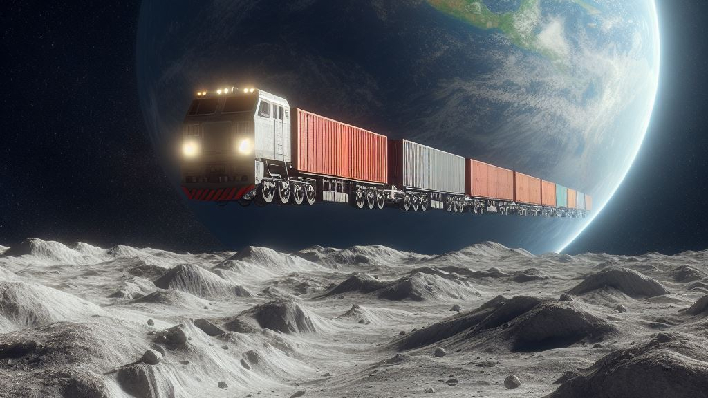NASA Details Wild Plan To Build A Levitating Robot Railway On The Moon
It is no secret that NASA wants to create a lunar base as part of its Moon to Mars plan. The space agency also knows that being able to transport material gathered from the Moon will require a transport system. Enter mission concept Robotic Lunar Surface Operations 2 (RLSO2). RLSO2 proposes developing FLOAT - Flexible Levitation on a Track - to meet transportation needs.
If successfully implemented, FLOAT would be tasked with the transport of regolith mined for ISRU consumables (H20, LOX, LH2) or construction, as well as transporting payloads around the future lunar base, and to/from landing zones or other outposts.

Rather than using traditional trains which run on tracks, FLOAT will employ unpowered magnetic robots that will levitate over a 3-layer flexible film track. The track will comprise a graphite layer, enabling robots to passively float over tracks using diamagnetic levitation, a flex-circuit layer generates electromagnetic thrust to controllably propel robots along tracks, and an optional thin-film solar panel layer which generates power for the base when in sunlight. NASA remarked the robots will have no moving parts and levitate over the track to minimize lunar dust abrasion/wear.
Another advantage to using this type of rail system is it unrolls directly onto the lunar regolith, unlike conventional methods which require major on-site construction. Adding to the advantage is it can also be rolled back up and then placed down at a different location for different configurations and adapting to an ever changing lunar base layout.
As RLSO2 moves into its second phase, the team will focus on completing the following key tasks:
- Design, manufacture, and test a series of sub-scale robot / track prototypes, culminating with a demonstration in a lunar-analog testbed (that includes testing various site preparation and track deployment strategies).
- Investigate impacts of environmental effects (e.g. temperature, radiation, charging, lunar regolith simulant contamination, etc.) on system performance and longevity.
- Investigate / define a technology roadmap to address technology gaps and mature manufacturing capability for critical hardware (e.g. large-area magnetic arrays with mm-scale magnetic domains, and large-area flex-circuit boards).
- Continue refining simulations of FLOAT system designs with increased fidelity, to provide improved performance estimates under the RLSO2 mission concept.

